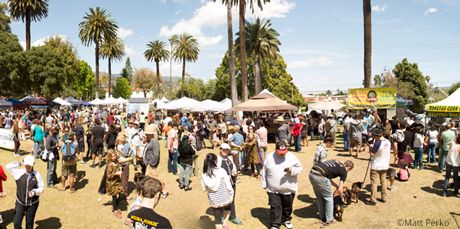Reflections on Earth Day
Published on April 29th, 2014
The first Earth Day was Saturday, April 22, 1970, and was unprecedented and thoroughly astonishing.
No government or large civic group hatched the idea of a global coming-together of students and anybody else in downtown settings, schools and college campuses for a great “teach-in,” somewhat in the model of the anti-Vietnam war gatherings. Beyond this idea, the founder, Wisconsin Senator Gaylord Nelson, did not exactly know what Earthdayers might do other than celebrate our environmentally troubled earth and the effort to preserve it.
Some 20 million people (by somebody’s count) gathered worldwide to listen to talks and debates, hammer gas-guzzling autos into useless metal sheets, and pass globes back and forth above the crowds. Many of the lecturers reported on and lamented the rapid expansion of global and American populations.
I was hiking in the back-country of Santa Barbara and missed the first Earth Day, which was celebrated, I was told, in downtown Santa Barbara and on the UCSB and Community College campuses. I haven’t missed many since, and things have changed – though not fundamentally.
The site for some time has been centrally located (mustn’t encourage fossil-fuel emissions) at Alameda Park downtown. This year, Santa Barbara’s Earth Day, held the weekend after the official Earth Day on the calendar, drew an estimated 37,364 visitors, a small increase over last year. Booths and people filled the park for two days, exchanging information and opinions on Green cars (20 exhibitors offered quiet rides), efficient lighting, Green films and recycling techniques. A Farm-to-Table dinner took the short trip from local growers to long tables full of eaters. Every exhibitor was sustainable, or on the way to whatever that word meant.
A high-pressure zone off the coast sent us a fierce afternoon wind shutting down a few booths on the west side of the park, including our CAPS booth, for a brief time. Was Nature reminding us how much free energy she could easily deliver if we would organize to make sane use of it?
Earth Day is an up-beat occasion when bright-eyed children learn where their food and transportation come from and at what eco-system cost, and when earth-attuned citizens see and debate the latest ways to lighten their own and America’s footprints. Except for one thing.
At the first few Earth Days, respected scholars like Paul Ehrlich, E.O. Wilson, C.P. Snow and Garrett Hardin were asked to address large crowds on “the overpopulation problem” that lay beneath the wounds being inflicted on our Earth. The “teach-in” dimension of Earth Day has through the years been fragmented into small canvas booths where a handful of booth-tenders promote low-energy lighting, compost toilets and the virtues of local food.
 At Santa Barbara’s 44th Earth Day event, the problems produced by population growth received attention only at the Californians for Population Stabilization (CAPS) booth, staffed by board, staff and volunteers, where visitors browsed through our printed materials. But I for one pine for an earlier Earth Day with a crowd periodically lured out of the little booths to go to a central kiosk where a respected earth-watcher responds to the crowd’s question asked of C.P. Snow on a campus in Missouri: “What is the message?”
At Santa Barbara’s 44th Earth Day event, the problems produced by population growth received attention only at the Californians for Population Stabilization (CAPS) booth, staffed by board, staff and volunteers, where visitors browsed through our printed materials. But I for one pine for an earlier Earth Day with a crowd periodically lured out of the little booths to go to a central kiosk where a respected earth-watcher responds to the crowd’s question asked of C.P. Snow on a campus in Missouri: “What is the message?”
The answer: “Peace, food, no more people than the Earth can take!” – the answer repeated until the crowd takes up the chant, and Earth Day becomes a Teach-In in Full.




